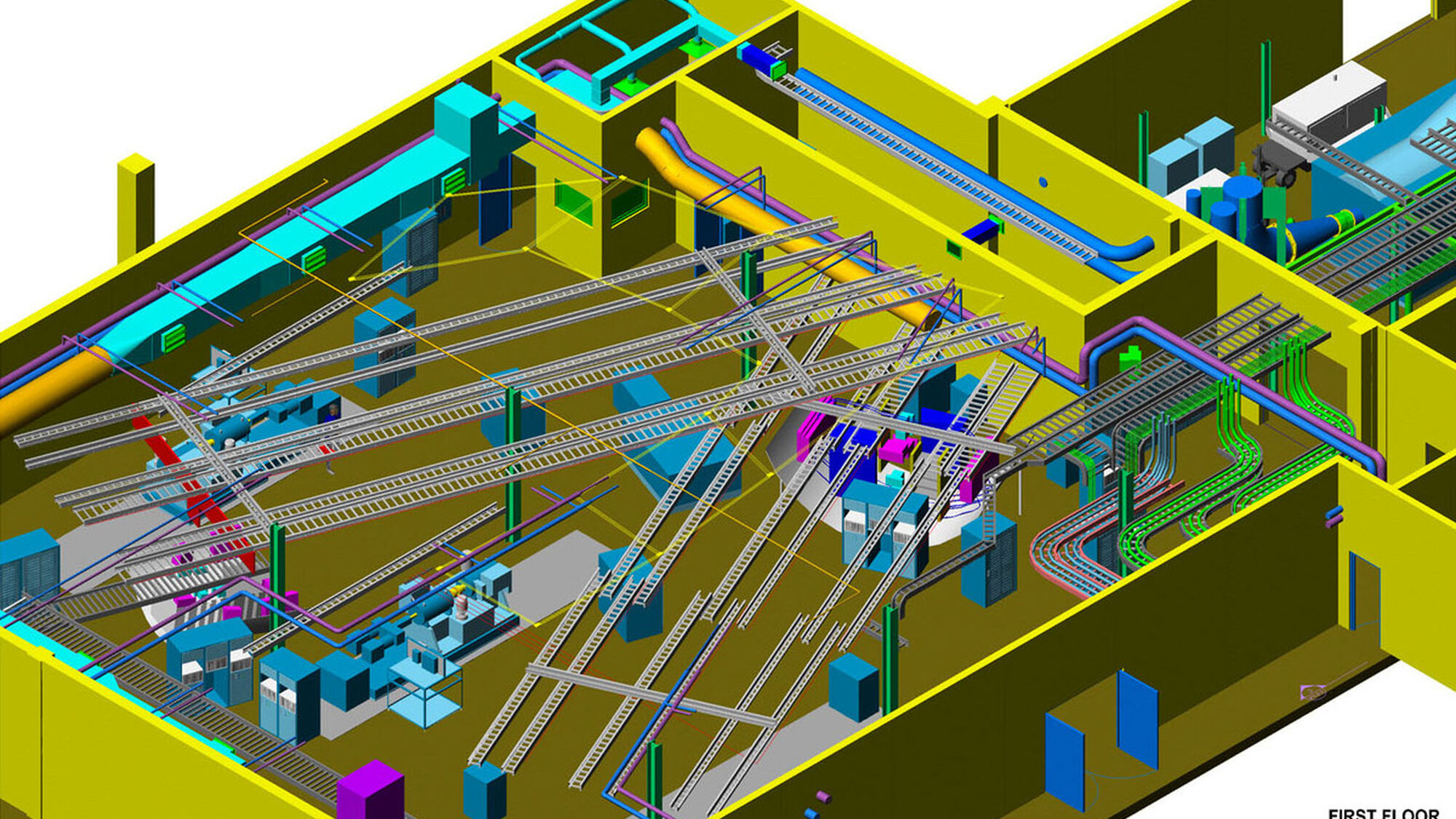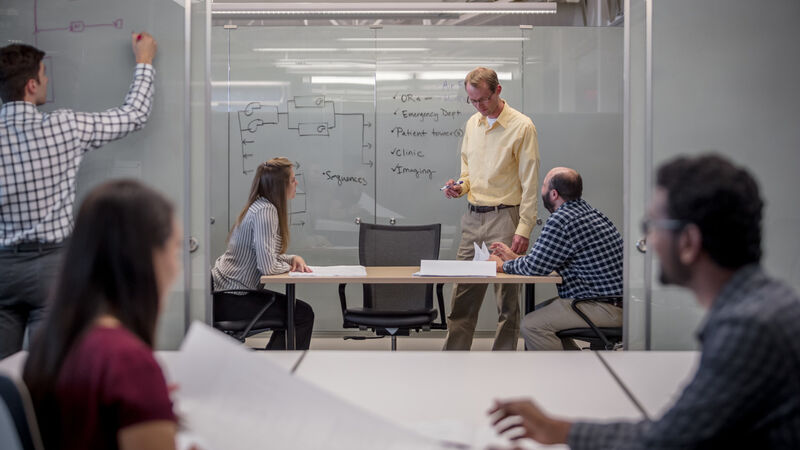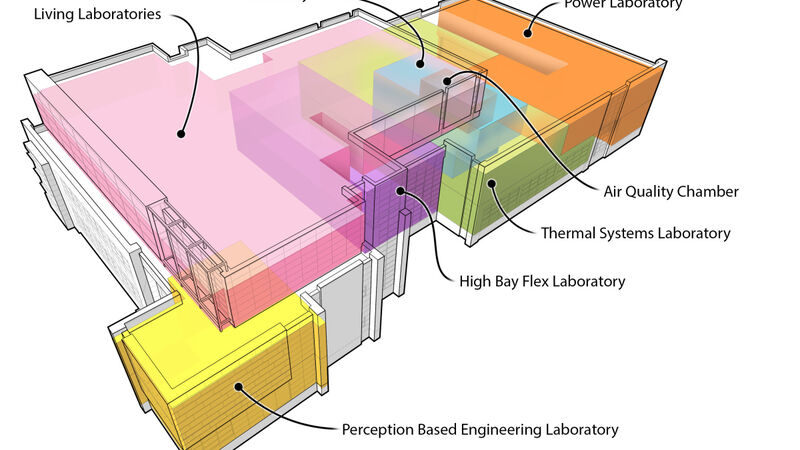
Annual Space Symposium Recap
I attended the 34th annual Space Symposium in Colorado Springs with Affiliated Engineers’ Director of Aerospace Facilities, Mark Lee, USAF Colonel (ret.), a veteran of four space shuttle missions pictured here during a spacewalk.
With 200-plus vendor booths and attendance rumored to be 14,000, there is no doubt that space is a booming market. Exhibitors were promoting their rocket, satellite, sensor, research, and manufacturing prowess, just to name a few.
Three important themes have stuck with me long after the conference ended: teams that collaborate get farther faster, 3-D printing is changing space exploration and advancing clean manufacturing and testing technologies will be important to our collective success.

Prior to working at Affiliated Engineers Mark Lee was a NASA astronaut. His space missions included: STS-30, STS-47. STS-64, STS-82.
Collaboration is Key
Words like “we” and “us” were everywhere and a quote that stuck in my head was the African proverb, “If you want to go fast, go alone. If you want to go far, go together.” Space is the definition of far and it will take many, many teams of people to reach farther and farther into space. At the symposium I met people from England, Japan, Sweden, Malaysia, China, New Zealand, UAE, and France, driving home the point that space is a global challenge and business opportunity.
AEI takes pride in our ability to collaborate with clients. Often project scope and design criteria are ambiguous at the beginning and our clients rely on AEI’s flexibility and expertise to define and give direction. This is especially true in the aerospace and test cell markets, where technology is on the bleeding edge of what’s possible. For engineering teams, that means jumping into the challenge of taking limited information, using previous design experience, and brainstorming with clients to develop unique, safe and budget-conscientious solutions.

Collaboration is key.
Rapid Prototyping for Space Exploration
Referred to as 3D printing or additive manufacturing, the technology allows three-dimensional parts designed on a computer to come to life via layering or sintering of powders in minutes or hours, rather than days or weeks of machining.
The process allows for rapid design progression by test-fitting prototype parts and reducing manufacturing costs by speeding up manufacturing time. In our experience designing addictive manufacturing labs and performing process hazard analyses, the main concern is the safe handling of combustible powders. We help clients reduce their risk by either adding active and passive facility safeties or developing Safe Operating Procedures (SOPs).
The New York Times shared a video about 3-D Printing for Space Exploration. Branch Technology is developing a 3-D printing process that can build structures on Mars. Step into their Tennessee workspace in 360 degrees.
Clean Manufacturing and Testing
Finally, clean manufacturing and testing of electronic components is an ever-increasing industry need. The aerospace industry is almost entirely digital and becoming increasingly autonomous. Launch systems, vehicles, satellites, and research experiments all rely on electronic components and sensors. To be reliable, three things should happen:
- During the R&D phase, the devices should be tested for environmental extremes (i.e. hot/cold, vacuum, and ultra-violet light) and performance envelope. Designed by AEI, the 60,000 square foot Herrick Laboratory Building at Purdue University is devoted to precision testing and includes sensory and vibration labs, thermal systems labs, psychrometric chambers, and test cells.
- Components should be manufactured in a clean environment, ideally a clean room. Clean rooms are designated ISO Class 1 through 9, which are based on the number and size of allowable particulates.

Herrick Laboratory Building illustration by Affiliated Engineers.

Clean room at the Advanced Science Research Center.
AEI designed the Advanced Science Research Center for the City University of New York that has Class 100, Class 1,000, and Class 10,000 clean rooms. The building also includes laboratories devoted to the study of nanoscience, structural biology, neuroscience, photonics, environmental sciences, nanotechnology, and remote sensing.
3. Post-manufacturing, the components should be tested to validate successful fabrication. AEI has designed numerous clean rooms and test facilities in our 40-year history. We work with clients to develop their requirements and have designed small stand-alone rooms, to entire campuses dedicated to testing and manufacturing.
Conclusion
Beyond the pictures of the of the Milky Way that thrill all of us, research in space has innumerable benefits to humankind: ultrasound technology to bring healthcare to remote places; robotic arms used in thousands of surgeries every day; and advanced water quality monitoring and purification essential to life on Earth.
Advancing space exploration takes teams working together to apply their specialized skills. With 40 years of expertise in designing the country’s most advanced research and manufacturing spaces, AEI is a trusted partner to get us all farther, faster.